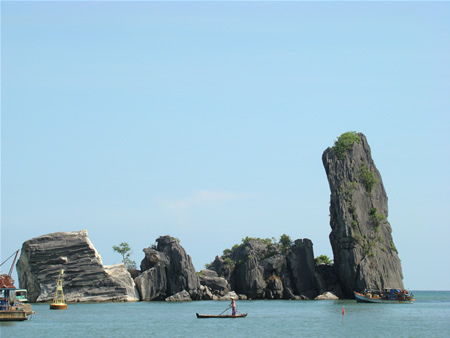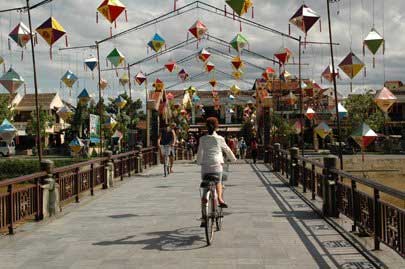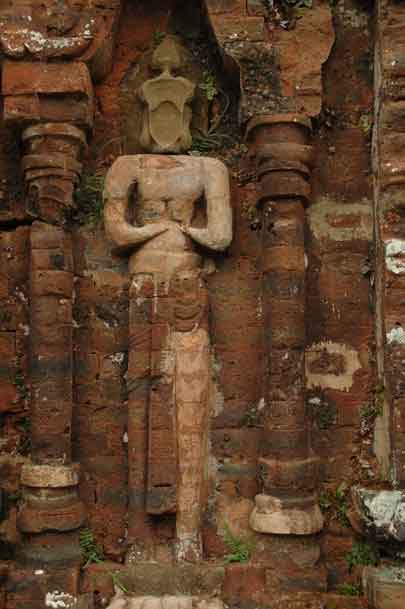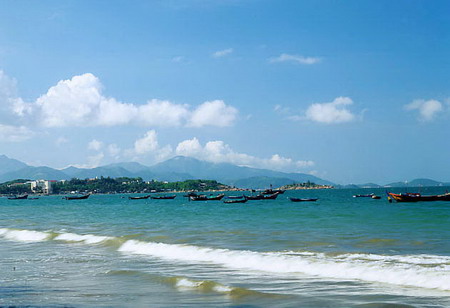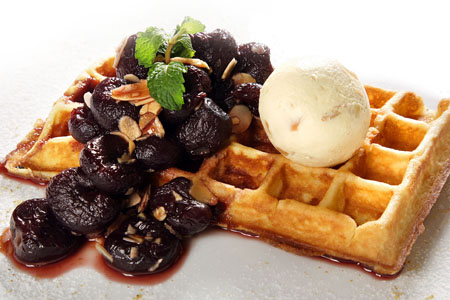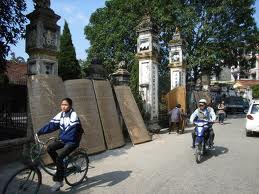The National Circus Gala this week will be the last time the Ho Chi Minh City Circus performs at the September 23rd Park, its home for more than a decade. Nomadic life continues after 12 years in a downtown park.
The Ho Chi Minh City Circus at September 23rd Park. The park will soon become a bus station and the circus will have to relocate.
The park will soon become a bus station and the circus will have to relocate, and it is not the first time it has been asked to do so.
Nearly 70 artists will take part in the October 19-21 gala, a precursor to the International Circus Festival to be held in Hanoi next month.
It will feature some famous circus artists from Hanoi, Quang Tri and Hue, and the Vietnam Circus Association will nominate the top four performances to represent the country at the Hanoi festival.
But the gala is not the HCMC artists’ main concern right now since they have been asked to move out of September 23rd Park by the month’s end.
Phi Vu, 49, a versatile performer (a trapeze artist, a clown and other roles), told Vietweek that since its establishment in 1986, his troupe has been moved around several times.
“We have been living a nomadic life for many years, moving from a theater and swimming pool in District 5, then District 11, and recently, this [September 23rd] park. However, it looks as though this is not the final venue.”
The park in District 1 is not an ideal place for a circus, but its 3,000-square-meter area is the best and largest venue the HCMC Circus has had so far.
It gives them enough space for a full-fledged tent, a practice area, and room to care for a variety of animals including elephants, dogs, monkeys, horses, and a python.
Vu, who became the troupe’s first Meritorious Artist (a title granted by the government) in 1997 and has been a circus performer for 35 years, said it is not the first time that his troupe has been asked to move out of the park.
“In 2007 we were told we might have to go a different venue, the HCMC Zoo.
A performance by the HCMC Circus. The troupe will compete in the National Circus Gala October 19 to 21 in Ho Chi Minh City.
“[That] really puzzled us since it was too small for the substructures and equipment.
“Moreover, we were told to merge with other stage arts like puppetry to create something like a union of stage arts from the south. It would be messy to mix arts that do not match.”
Pham Van Xuyen, deputy director of the Vietnam Circus Association, told Phap Luat newspaper in an interview: “Technically, circus and puppetry cannot coexist under one roof due to their differences, and a strained merger never works.”
Ho Van Thanh, head of the HCMC Circus, told Vietweek that the first difficulty is fitting the tent in the zoo, where the allotted area is only 600 square meters.
“The next problem is the lack of space to keep tame animals amidst the wild ones. Moreover, the HCMC Wild Animal Protection Association does not allow us to care for our animals in the zoo, so we have to hire a private site for them. This will affect the training a lot.”
“Last but not least it takes a lot of money to upgrade to a soundproof tent in order not to disturb the high school next to the zoo. It will take a long time and money for us to do this and other things to set up in a different, much smaller place.”
Back in 2007, these arguments prompted authorities to allow the circus to stay on at their favorite place for five more years, although its infrastructure, including the tent and seating, animal enclosures and safety arrangements have deteriorated. The circus company has not had the money to maintain or upgrade its facilities.
Vu said the troupe has been asked to move out at the end of this month to make way for a bus terminal.
“But so far, concerned authorities have not offered any support.
“If we move to Gia Dinh Park in Go Vap District, around 10 kilometers from September 23rd park, as they want us to, our troupe will struggle even more. Audiences will not come from downtown areas to watch our show.”
Furthermore, Thanh said, the Go Vap Park would be just another temporary venue for his troupe.
“According to the government’s decision, our final destination will be an amphitheater in District 11. However, this is just a sketch that has remained on paper for years.”
Despite all the troubles the company has faced, including the lack of money and a permanent venue, it has tried to attract more viewers. The younger members of the circus, in particular, have been able to find name and fame for themselves in the international arena.
The company’s artists have won both national and international prizes, including a silver medal at the 1997 International Circus Festival in Hanoi and a bronze medal in North Korea in 2000.
It has also entertained audiences in many cities in France, Belgium, Taiwan and elsewhere.
Vu is also director of the upcoming National Circus Gala.
“Thanks to the money we have collected through extra shows and canvassing funds from enterprises and individuals, we are able to put up some good shows, not only for children but also adults, like the circus-drama ‘Romeo and Juliet,’ and this coming event.”
The circus has lost is popularity in Vietnam over the last two decades for various reasons. Both children and adults have favored other forms of entertainment (video games, reality shows etc.) Lacking funds to invest in training and offering better remuneration to the artists, circuses have laid themselves open to the charge of putting on monotonous shows and not being innovative.
In this situation, winning back the audience is not easy, Vu said.
“But this is the target of any art. We will never give up.”

